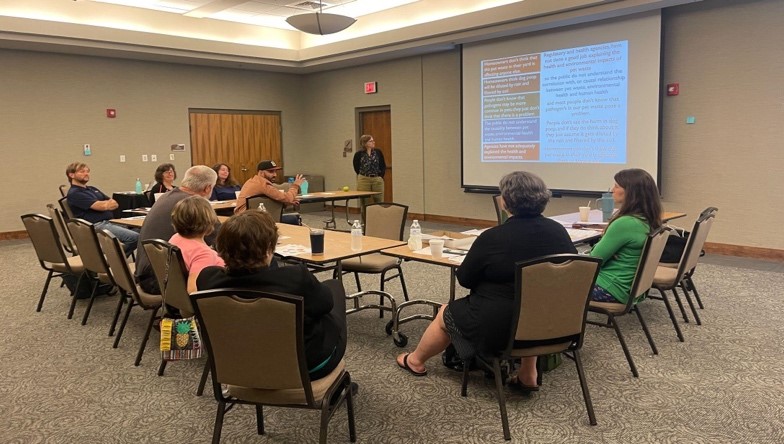Wastewater collection and treatment systems seem like basic infrastructure to most people, but are fraught with complexity due to aging pipes, deferred maintenance and a never-ending supply of unpredictable materials being sent down the drain by users. Though most wastewater collection systems are similar in design and construction, each system and each neighborhood can have unique issues that add up to a big mess. So how do you begin to get to the root cause of repeated problems in a wastewater system, then communicate to system users how what they flush effects their utility bills?
EFCWest developed the Seeds of Solutions (SOS) process to help communities explore why protecting our water and sewer systems is so challenging, and how they can change the narrative to support positive actions. The first step in the SOS process is getting to the root cause of the issues. All too often we make assumptions about what’s happening, ignore complex variables, or look to fancy technical solutions without sufficiently exploring what’s actually happening in a complicated system. Developing a better understanding of the root causes allows us to make a stronger case for communicating remedies with system users, management, and other constituents.
Asking Five Whys in Oxford, Alabama
EFCWest recently put the SOS process into practice in a local workshop with a group of community members, municipal wastewater utility managers, and clean water advocates in Oxford, Alabama. They began by facilitating a discussion of general problems in the local system, and participants worked together in small groups to write a brief phrase (less than 20 words) describing an issue in the wastewater system. This set the problem to be explored in the next step: asking a series of “five whys” for the issue through the lens of six viewpoints – Political, Environmental, Social, Technological, Economic, and Legal/Regulatory (PESTEL). As the series of whys were asked for each PESTEL category, participants drilled down to determine a root cause for the issue.
Here’s an example of the five whys asked for the Environmental category:
Issue statement: People do not understand the process and cost of collecting and treating wastewater.
Why? #1: Because they were never taught about the process of wastewater collection and treatment
Why? #2: It was not a priority to teach them (they did not get an instruction manual for using the sewer system and what materials are not acceptable to flush)
Why? #3: Because talking about poop and other stuff that winds up in wastewater is icky
Why? #4: And there is such a variety of variety of things besides poop that get flushed down the drain
Why? #5: Some people think it is more convenient to send “flushable” wipes down the drain – they do not break down, clog up the pipes
Why? #6: There is no consistent education or outreach about the problem
Next Steps in the SOS Process
Once the five whys (and sometimes more whys!) are asked and answered, the SOS process uses the root causes identified in this step as the basis for understanding leverage points to make improvements and communicate solutions. Workshop participants identify their target audience and use the power of storytelling to build messages that make personal connections, leading to more effective outcomes. Even small communities with small budgets can make big improvements and reduce costs by developing a better understanding of their issues, solutions, and audience.

